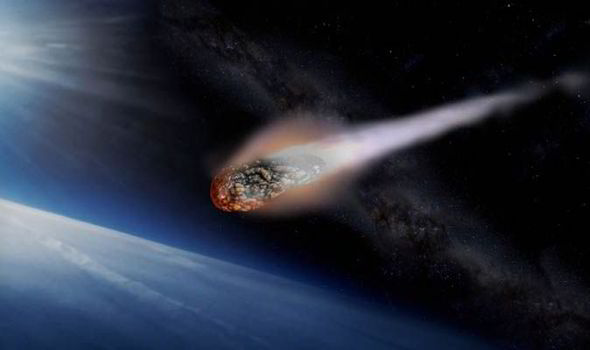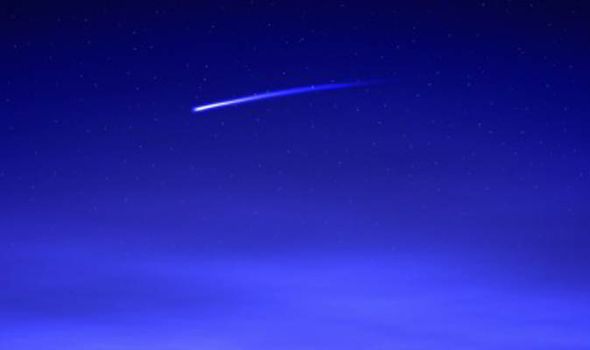Scores of GIANT asteroids on course to hurtle past Earth within the month, NASA reveals
SCORES of giant asteroids are on course to hurtle close to Earth before the end of February, according to latest NASA space data.
By NATHAN RAO
 GETTY
GETTY
Some are more than 1km wide and threaten devastating consequences if they were to strike our planet.
Of almost 70 asteroids on the radar most are around 100 metres wide, the size of a double decker bus, and would be capable of causing significant damage.
Experts warn if one of these monsters, some of which travel at up to 70,000 miles an hour, were to hit Earth it could “alter life as we know it”.
Plumes of debris thrown into the atmosphere would change the climate making the planet inhabitable for all life including humans.
An impact would still be catastrophic destroying cities and knocking out transport and communication networks.
According to NASA’s Near Earth Object Programme, there are 68 ‘close approaches’ forecast before the end of next month
The next, due on January 3, is the 490-metre wide 2005 YQ96 asteroid currently hurtling through space at more than 30,000 miles per hour.
The biggest to skim the planet will be the mile-wide 2007 EJ asteroid due to throttle past on January 12th at 34,500 miles per hour.
Experts say although it is unlikely any of these will hit the Earth, there is always a chance they may veer off course or explode showering the planet with debris.
Bill Napier, professor of astronomy at the University of Buckinghamshire, said: “If you are talking about a real major impact you are looking at one every few centuries, these are the real show stoppers and in history have sometimes been described as fire from the heavens.
“However the smaller collisions happen more frequently, asteroids of 2km (1.2 miles) can cause a global catastrophe which would exterminate around two thirds of the human race, mainly due to the heat produced.
“There is also the hazard brought by comets, and these occur on much shorter timescales.
“It the Earth passes through the tail of a comet it will generate a massive plume of smoke, and this could be a civilization-stopper.”
 GETTY
GETTYIt just takes one asteroid to completely destroy life, not just humanity, but all speciesGrigorij Richters, co-founder of Asteroid Day
The warnings come after scientists from around the world converged at the end of last year to raise the alarm that there are around one million undetected asteroids currently flying through space.
They said without better technology and means of deflection one could hit the Earth and trigger a disaster similar to the collision which killed the dinosaurs 65 million years ago.
Launching Asteroid Day, designated the 30th of June, co-founder of the initiative Grigorij Richters said: “There are thousands of asteroids that we know nothing about, we take this threat very seriously.
“It just takes one asteroid to completely destroy life, not just humanity, but all species.
“Asteroid Day is all about raising awareness, understanding there’s a threat and dealing with it.
Scientists reckon of all the asteroids blasting through space and capable of wiping out our planet they are aware of just one per cent of them.
Space expert Bill Nye, who has backed the project, said if the Tunguska asteroid which hit Siberia on June 30, 1908 had arrived just hours later it would have “changed the path of civilisation”.
He said: “If the event had taken place 6.5 hours later Berlin would have been in the object’s path and that would have changed the path of civilisation.
“Our challenge is to find these things but it is looking like a piece of charcoal in the dark.
“We have technology to deflect asteroids using lasers, this is the real deal, perhaps the reason we haven’t heard from other civilisations in space is because they didn’t pass the asteroid test.
“Dinosaurs were almost certainly killed off by an asteroid.”
NASA said it is aware of 1,552 “potentially hazardous” asteroids (PHAs) in outer space which show an orbit dangerously close to swiping Earth.
A spokesman said: “Potentially Hazardous Asteroids (PHAs) are currently defined based on parameters that measure the asteroid's potential to make threatening close approaches to the Earth.
“This ‘potential’ to make close Earth approaches does not mean a PHA will impact the Earth.
“It only means there is a possibility for such a threat.
“By monitoring these PHAs and updating their orbits as new observations become available, we can better predict the close-approach statistics and thus their Earth-impact threat.”
http://www.express.co.uk/news/nature/549722/Giant-asteroids-close-Earth-month-February-Nasa
http://www.express.co.uk/news/nature/549722/Giant-asteroids-close-Earth-month-February-Nasa
No comments:
Post a Comment